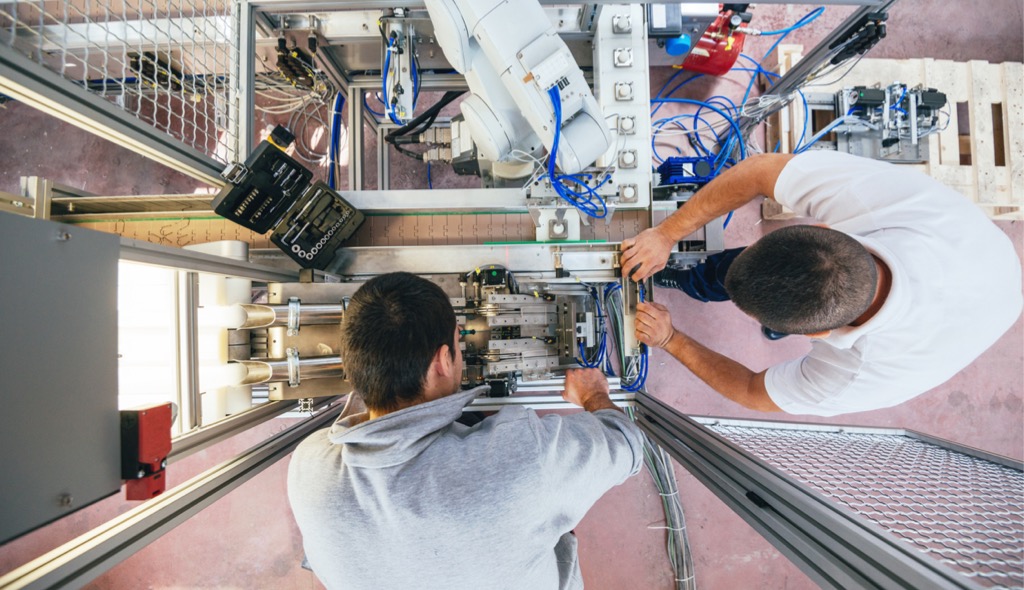
The Covid-19 pandemic has hit manufacturers hard. Many organizations have to respond to dramatic spikes in demand or switch production to in-demand products, all while operating with less than 50 percent of staff onsite. How can you do more with less? Here are five practical tips.
1. Create More Capacity
Tissue, bottled water, and baby care products are seeing huge spikes in demand as consumers panic-buy. Every spare minute of production in those industries must now be harnessed to produce greater levels of output.
The paper industry already runs continuous operations 24/7 which doesn’t give you much scope to increase capacity. What you can do is reduce downtime. Paper machines run with a 12-18 hour maintenance window every two or three weeks. You may find yourself doing things like deferring shutdowns and maintenance windows. In order to generate instantaneous capacity, you may decide that you can afford to forgo this 18-hour shutdown to get over the hump. Maybe next week you’ll take four hours and do a “gas and go” to get the really necessary stuff done.
In industries that do not have continuous operations, you can try to stretch the time between maintenance shutdowns. If you are running your line five days a week around the clock, you may ask people to work overtime (while minimizing social contact) to run more operating hours. If you have a major project that was going to take you down for a week or two to do a major rebuild, you may choose to skip that.
Eventually, of course, that catches up with you. The reality is once you start utilizing the top ends of your productive output curve, that extra 1% of output comes at a very high price. You’re running over time. You’re risking the failure of equipment. But it will allow you to get more capacity online right now.
2. Defer Shutdowns Safely
In the old days before we had continuous monitoring of equipment, if we knew a bearing was bad, we would do things like go from applying grease once a week to every eight hours. We’d waste a ton of grease, but at least the grease that was there was clean, was cool and didn’t contain contaminants. It allowed you to kind of limp through the problem a little bit before you have to do a major shut down.
If you have continuous monitoring with machine health, you can use machine data to make a judgment call on the risk of deferring a shutdown. I may know I have an alarm condition on this particular gearbox, but based on the history and the failure predictions that machine health gives me, I could try and run another couple of weeks before I shut down. That helps harvest every minute of operation. If you have reliable, real-time data and analytics, you’re more likely to be able to take that risk without undue side effects.
3. Use Mothballed Equipment
You may have equipment that has been mothballed because you had capacity which you can now use. That equipment might’ve been mothballed because you had excess capacity or it was not efficient or it was expensive to run. But when you’re facing a situation like this, you’re going to grab it and every other piece of equipment that’s available.
When I ran Pepsi’s Denver facility, we had three canning lines and we used to run all three. Over time, as we got more efficient, we shut the biggest one down because we really didn’t need the capacity. But there were a couple of times when we got into a pinch that we started it up again. It might take us a day or two to make sure things were back in shape or to find out who stole what part from the line, but you quickly figured out how to get that up and going.
4. Limit SKUs
Changeovers cause downtime and not every product runs at the same level of efficiency. Most changeovers take some amount of equipment interaction so you’re down while that equipment gets reset. Secondly, the smaller volume SKUs usually do not run as well. You don’t have as much experience with them, so they rob you of uptime when you’re actually running.
In the paper business, you might decide to make nothing except the four-pack and 12 pack of toilet paper. In the beverage industry, some of our lines are capable of producing both water and carbonated beverages in different package sizes. Water is generally easier to process than soda once you get going so you may decide we’re only gonna produce water. In the Gatorade operation, they produce several different sizes of Gatorade bottles. They may decide they’re not going to lose eight hours of operations for a changeover and will stick to the iconic 32-ounce Gatorade bottle. It’s the right size and we can make tons of it.
5. Reconfigure Teams
You have to develop contingency plans for how you’re going to deal with protecting your employees and dealing with a high absentee rate while still keeping production running.
Some pieces of equipment can operate with less monitoring than normal. You might have people covering multiple pieces of equipment on the understanding that you’re going to give up some response time. But if the option is slowing the equipment down, then you’ll take 50 percent output versus zero output any day of the week.
This is where it pays to know your workforce. Figure out how much of your operators’ mechanical abilities you’re really tapping into. In many locations, you’ll find that your operator rebuilds cars as a hobby at the weekend. You may have a forklift driver that’s a tinkering inventor on the side. How can you tap that talent to help you?
If you have more operators than maintenance people, maybe Rob the operator can work side by side with the mechanic because not all work the mechanics do is technical. The operator can go grab tools for them, get parts out of the store room and to help clean up an area so they can be more effective. You might create skeleton crews by taking people from your current lineup and supporting them with temporary employees or people from other roles to help you bring more shifts of operation online.
When I ran the San Antonio plant for Pepsi, we had a virus go through San Antonio. Almost half of our people in manufacturing were out. We grabbed a few temps and shifted regular employees into jobs that they’re skilled to do and what that opens up, you try to fill with unskilled labor. I ran a piece of equipment and I was a plant manager. My production manager ran another one. The supervisor was running the filler. When you have those crises, everybody pitches in.
6. Reliable Machines
The value of reliable equipment really shows up at times like this where every customer is asking you for more. The more reliable your equipment is, the more uptime you get. I know for a fact that manufacturers are starting to place customers on allocation when it comes to hot products like water. A customer might call and want a million cases. You might say “We can give you 500,000 and that’s all we can give you”. When you do that, customers don’t like it, but they understand.
The worst thing you can do in that situation is not deliver upon your commitments. If your equipment is not reliable, if your equipment fails when you are producing that order, that’s just terrible. So having equipment that’s reliable, having equipment that can tell you when it’s gonna fail, gives you the ability to really maximize your productive output and capacity to meet the customer demands that you have in front of you.





